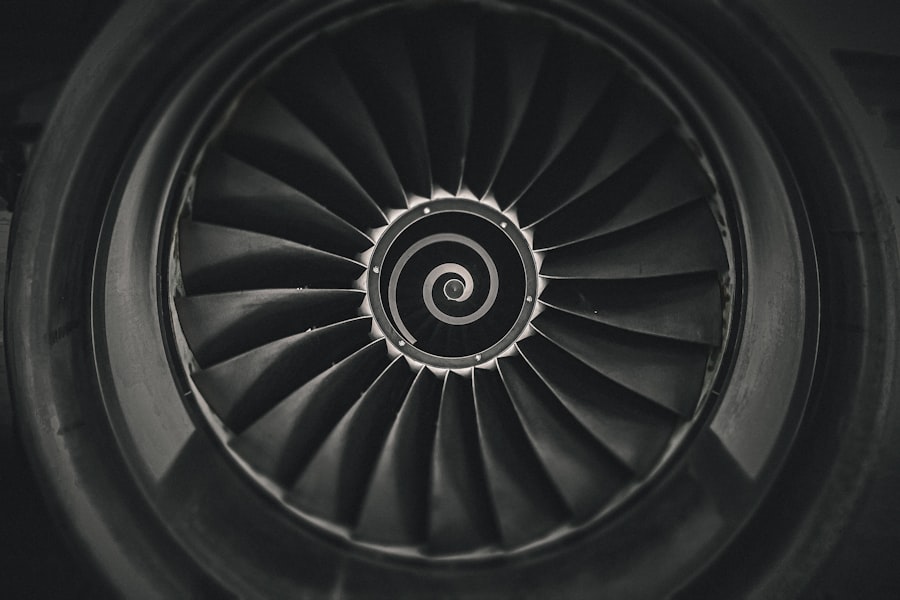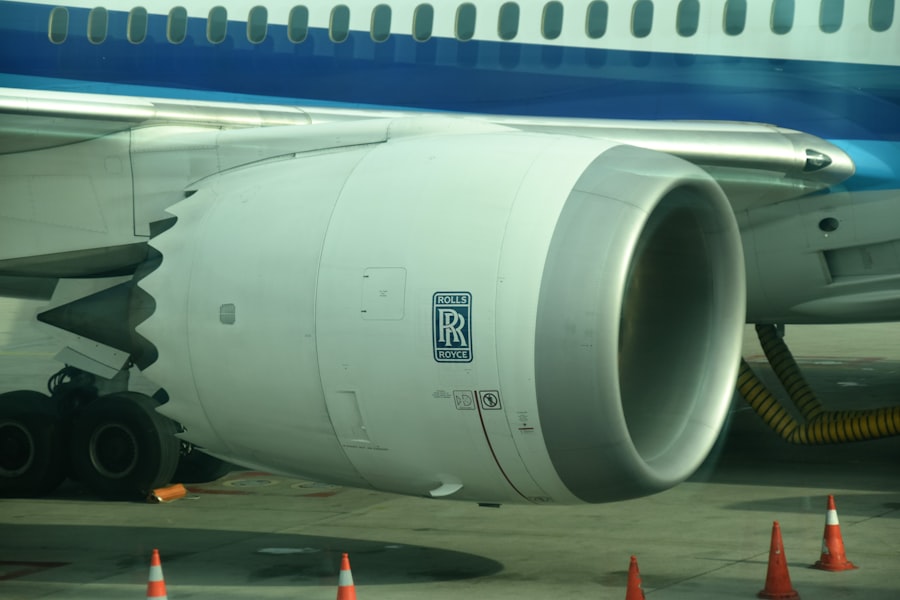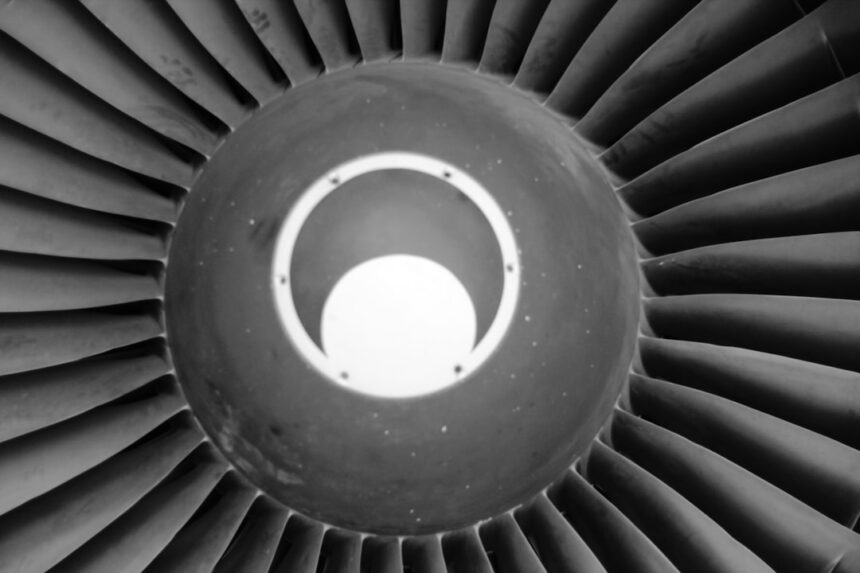The origins of German jet engine technology can be traced back to the early 20th century, a period marked by rapid advancements in aviation. Pioneering figures such as Hans von Ohain and Ernst Heinkel began to explore the potential of jet propulsion, laying the groundwork for what would become a revolutionary leap in aeronautics.
This moment marked a significant milestone in aviation history, showcasing the potential of jet propulsion to transform flight. As the technology evolved, it became clear that jet engines offered distinct advantages over traditional piston engines. They provided greater speed, altitude, and efficiency, which were crucial for military applications during a time of escalating global tensions.
The German aviation industry began to invest heavily in research and development, leading to innovations that would set the stage for future advancements in jet propulsion. The combination of visionary engineers and a burgeoning industrial base allowed Germany to emerge as a leader in jet engine technology, setting the stage for the dramatic developments that would follow.
Key Takeaways
- German jet engine technology was born out of the innovative work of Hans von Ohain and Frank Whittle in the 1930s.
- World War II played a crucial role in advancing German jet engine development, as the need for faster and more powerful aircraft pushed engineers to new heights.
- German engineers and scientists, such as Hans von Ohain and Wernher von Braun, made significant contributions to jet engine technology through their research and experimentation.
- The impact of German jet engine technology on aviation history was profound, leading to the development of faster and more efficient aircraft that changed the course of air travel.
- After World War II, there was a race to uncover German jet engine secrets, with both the Allies and the Soviet Union seeking to gain access to the advanced technology.
The Role of World War II in Advancing German Jet Engine Development
World War II served as a catalyst for the rapid advancement of German jet engine technology. The conflict created an urgent need for faster and more powerful aircraft, prompting engineers to push the boundaries of existing technologies. The Luftwaffe, Germany’s air force, recognized the potential of jet propulsion and prioritized its development.
During the war, several key projects emerged that showcased the capabilities of German jet engines. The Messerschmitt Me 262, the world’s first operational jet fighter, was a direct result of these advancements.
Its introduction into combat marked a turning point in aerial warfare, demonstrating the superiority of jet-powered aircraft over their piston-engine counterparts. The Me 262’s speed and agility allowed it to outmaneuver Allied fighters, highlighting the strategic advantages that jet technology could provide. However, despite its revolutionary design, production challenges and resource shortages ultimately limited its impact on the war.
The Contributions of German Engineers and Scientists to Jet Engine Technology

The contributions of German engineers and scientists to jet engine technology during this era were profound and far-reaching. Figures such as Hans von Ohain and his contemporaries played pivotal roles in developing turbojet engines that would lay the foundation for future advancements. Von Ohain’s work on the HeS 8 engine exemplified innovative thinking and engineering prowess, leading to significant improvements in thrust and efficiency.
Moreover, the collaborative efforts among various research institutions and companies fostered an environment ripe for innovation. Organizations like Junkers and BMW were instrumental in refining jet engine designs, experimenting with different materials and configurations to enhance performance. This spirit of collaboration not only accelerated technological advancements but also established a legacy of engineering excellence that would influence future generations of aerospace engineers.
The Impact of German Jet Engine Technology on Aviation History
| Year | Event |
|---|---|
| 1939 | First flight of the Heinkel He 178, the world’s first aircraft to fly under turbojet power |
| 1941 | First flight of the Messerschmitt Me 262, the world’s first operational jet-powered fighter aircraft |
| 1944 | Introduction of the Junkers Jumo 004, the world’s first mass-produced turbojet engine |
| 1945 | Impact of German jet engine technology on post-war aviation development |
The impact of German jet engine technology on aviation history cannot be overstated. The innovations developed during this period fundamentally changed the landscape of air travel and military aviation. Jet engines allowed aircraft to achieve unprecedented speeds and altitudes, revolutionizing both commercial and military flight.
The principles established by German engineers laid the groundwork for subsequent developments in jet propulsion that would dominate aviation for decades. In addition to transforming military aviation, German jet technology also paved the way for commercial air travel. The advancements made during World War II set the stage for post-war developments in civil aviation, leading to the introduction of jet airliners that could transport passengers across long distances at remarkable speeds.
This shift not only made air travel more accessible but also reshaped global connectivity, facilitating international trade and cultural exchange.
The Race to Uncover German Jet Engine Secrets After World War II
Following World War II, there was an intense race among Allied powers to uncover the secrets of German jet engine technology. Recognizing the strategic advantages that these innovations could provide, nations such as the United States and the United Kingdom sought to acquire knowledge from German scientists and engineers. This pursuit led to Operation Paperclip, a covert program that facilitated the relocation of prominent German aerospace experts to America.
The implications of this race were significant. The knowledge gained from German jet engine designs accelerated advancements in Allied aviation technology, allowing them to leapfrog ahead in certain areas of aerospace engineering. However, this also raised ethical questions about the means by which such knowledge was obtained and the moral implications of employing former adversaries in critical technological roles.
The Influence of German Jet Engine Technology on Modern Aircraft Design

The influence of German jet engine technology extends well into modern aircraft design. Many principles established during the early days of jet propulsion continue to inform contemporary engineering practices. For instance, advancements in materials science and aerodynamics pioneered by German engineers have been integrated into modern jet engines, enhancing performance and efficiency.
Furthermore, the design philosophies that emerged from this era have shaped how aircraft are conceptualized today. The emphasis on speed, efficiency, and reliability remains central to modern aviation design. As manufacturers strive to create more environmentally friendly and fuel-efficient aircraft, they often draw upon the foundational work laid by their predecessors in Germany.
The Challenges of Reverse Engineering German Jet Engine Technology
Despite the significant advancements made possible by German jet engine technology, reverse engineering these systems has proven to be a complex challenge. The intricacies involved in replicating advanced designs require not only technical expertise but also access to specialized materials and manufacturing processes that may not be readily available. Additionally, understanding the nuances of engineering decisions made by German designers can be difficult without comprehensive documentation.
Moreover, reverse engineering efforts often face legal and ethical hurdles. Intellectual property rights and international agreements complicate attempts to replicate or adapt these technologies without infringing on existing patents or agreements. As a result, while many nations have sought to harness the potential of German jet engine designs, they must navigate a landscape fraught with challenges.
The Legacy of German Jet Engine Technology in Today’s Aviation Industry
The legacy of German jet engine technology is evident throughout today’s aviation industry. Many modern aircraft owe their design principles and performance characteristics to innovations developed during the early days of jet propulsion. The turbojet engines that emerged from Germany’s wartime efforts laid the foundation for subsequent generations of engines, including turbofans and turboprops that dominate commercial aviation today.
Furthermore, the emphasis on research and development established by German engineers continues to influence contemporary aerospace practices. Companies around the world invest heavily in innovation, striving to improve efficiency and reduce environmental impact while maintaining safety standards. This ongoing commitment to advancement reflects a legacy rooted in the pioneering spirit of early German aviation engineers.
The Ethical and Legal Implications of Uncovering German Jet Engine Secrets
The quest to uncover German jet engine secrets raises important ethical and legal implications that continue to resonate today. The methods employed by Allied powers during World War II to acquire this knowledge often involved morally ambiguous decisions, including the recruitment of former enemy scientists without fully addressing their past affiliations or actions during the war. Additionally, as nations seek to leverage historical advancements for modern applications, they must grapple with issues related to intellectual property rights and ethical considerations surrounding technological transfer.
Balancing national interests with ethical responsibilities remains a complex challenge for governments and organizations involved in aerospace research.
The Collaborative Efforts of Historians, Engineers, and Scientists in Uncovering German Jet Engine Secrets
In recent years, collaborative efforts among historians, engineers, and scientists have played a crucial role in uncovering the intricacies of German jet engine technology. By combining expertise from various fields, these professionals have been able to piece together historical narratives that shed light on the development processes behind key innovations. This interdisciplinary approach has not only enriched our understanding of past technologies but has also informed contemporary engineering practices.
By studying historical designs and methodologies, modern engineers can draw valuable lessons that enhance their own work while ensuring that past mistakes are not repeated.
The Future of German Jet Engine Technology and Its Potential Applications
Looking ahead, the future of German jet engine technology holds exciting possibilities for innovation and application across various sectors. As global demand for more efficient and environmentally friendly aviation solutions grows, there is an opportunity for new developments inspired by historical advancements in jet propulsion. Emerging technologies such as electric propulsion systems and hybrid engines may benefit from insights gained from past research while addressing contemporary challenges related to sustainability and efficiency.
By building upon the legacy established by early pioneers in jet engine technology, future engineers can continue to push boundaries and redefine what is possible in aviation. In conclusion, the journey of German jet engine technology from its inception through its wartime advancements has left an indelible mark on aviation history. Its influence continues to shape modern aircraft design while raising important ethical considerations about technological development and transfer.
As we look toward the future, it is clear that the legacy of these early innovations will continue to inspire generations of engineers and scientists seeking to advance aviation technology further.
In the fascinating exploration of German jet engine secrets, one might find it intriguing to delve deeper into the technological advancements and historical context surrounding these innovations. A related article that provides further insights can be found on the website “In The War Room.” This article discusses the broader implications of wartime technological developments and their lasting impact on modern engineering. For those interested in expanding their understanding of this topic, you can read more by visiting the article on In The War Room.
WATCH THIS! 🪖How Stolen Nazis Built Cold War Power
FAQs
What are the German jet engine secrets?
The German jet engine secrets refer to the advanced technology and engineering innovations developed by German engineers during World War II to create powerful and efficient jet engines for aircraft.
Why were the German jet engine secrets significant?
The German jet engine secrets were significant because they represented a major technological advancement in aviation during World War II. The development of jet engines allowed for faster and more powerful aircraft, changing the course of aerial warfare.
What were some of the key advancements in German jet engine technology?
Some key advancements in German jet engine technology included the development of the first operational jet engine, the Junkers Jumo 004, as well as the pioneering work of engineers like Hans von Ohain and Frank Whittle.
How did the German jet engine secrets impact aviation history?
The German jet engine secrets had a profound impact on aviation history by paving the way for the development of modern jet engines and revolutionizing air travel and military aviation.
What is the legacy of the German jet engine secrets today?
The legacy of the German jet engine secrets lives on in the continued development and advancement of jet engine technology, which powers commercial and military aircraft around the world. The innovations and lessons learned from the German jet engine secrets continue to influence modern aviation.




